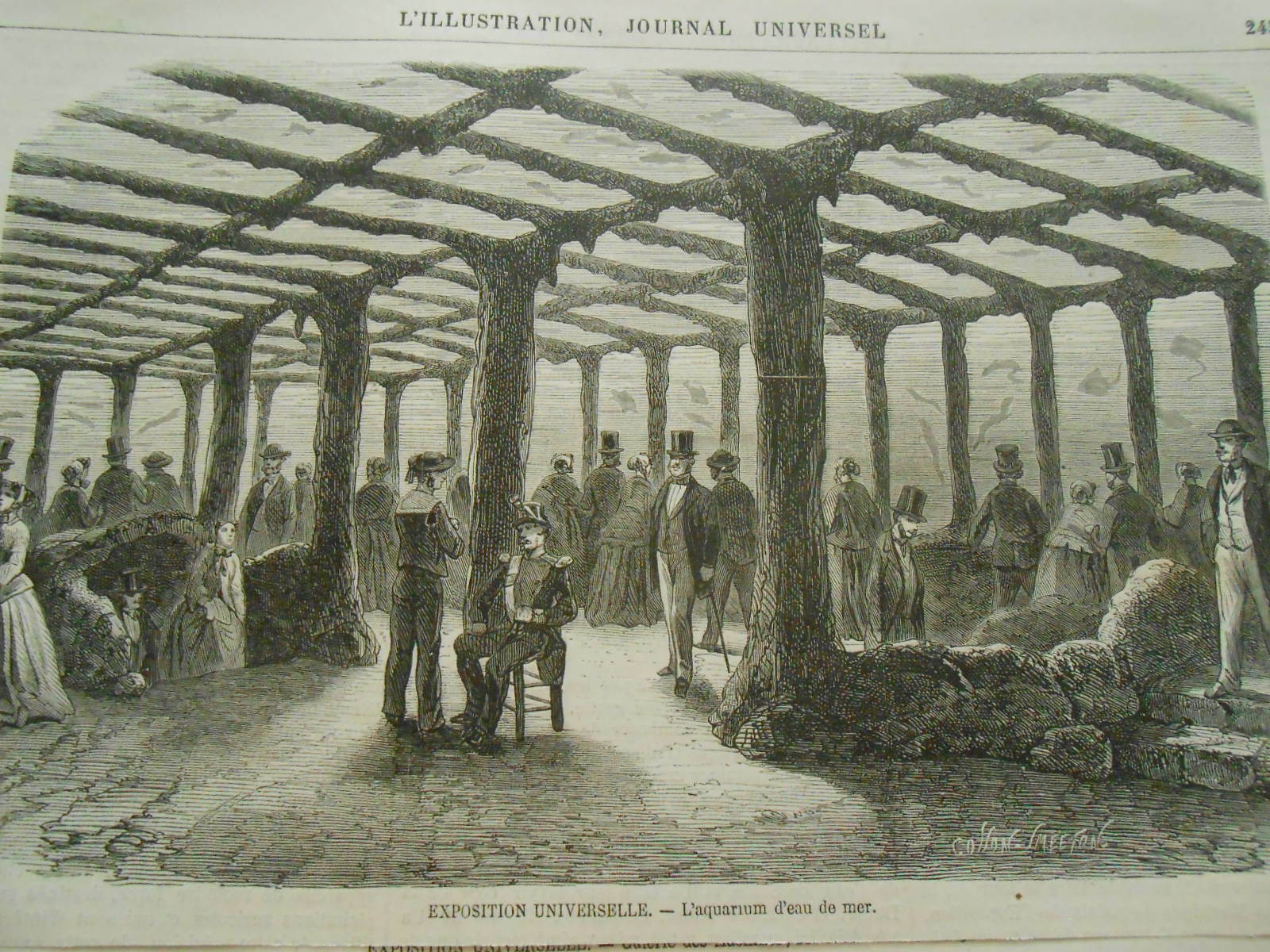Fictions of the Underwater World
The Grand Aquarium at Paris’ Exposition Universelle in 1867
The Grand Aquarium at Paris’ Exposition Universelle in 1867
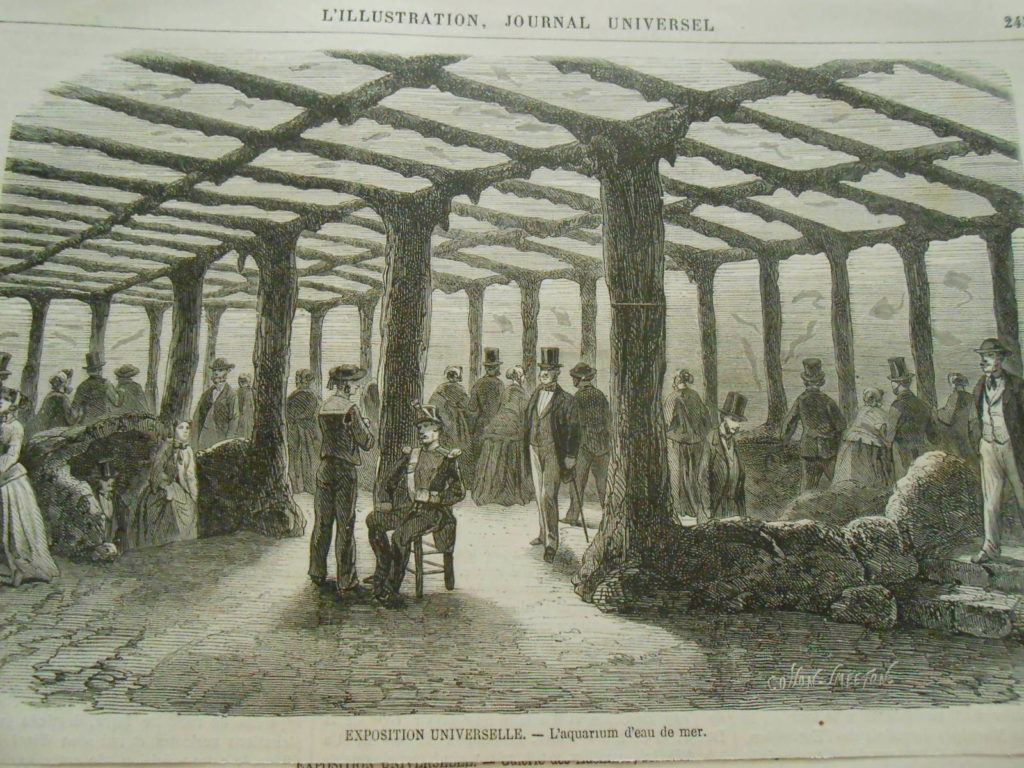
While for centuries the oceans were being feared as places where mystical monsters would lure in the dark depths, it was over the course of the 19th century when this fear was complemented by a strong interest and research focusing on living organisms of the sea. The consequential documentation records encouraged a broader fascination about submarine lifeforms, manifested in an ‘aquarium mania’ in 1850s French bourgeois households – a run on small private aquaria used as living room decorations. In parallel to these smaller and private displays, bigger aquaria made the still relatively unknown depths of oceans accessible to a wider public.
The analyzed case study aquarium was built in the context of the 1867’s Universal Exhibition that sought to bridge science and spectacle. In this sense, the ongoing research in maritime life has been presented in a spectacular way. While the first aquarium that was built in Paris in 1861 in the Jardin d’Acclimatation still had a scientific character, the aquarium at the Universal Exposition six years later aimed to convey the experience of the submarine world, giving the visitors the impression to be standing at the bottom of the ocean.
Given that the level of knowledge about the subaquatic world was still very low during the time when the first public aquaria were built, the 1867’s aquarium became one of very few sources of knowledge about the submarine world. Consequently, together with other contemporary and popular sources about the underwater world such as Victor Hugo’s novel Les Travailleurs de la mer (1866) or Jules Verne’s Vingt mille lieues sous les mers (1870) the aquarium strongly shaped people’s conception of the submarine, hence forming a knowledge common.
Haklin, Kathryn A. “Obscure Visions: The 1867 Aquarium and Its Literary Legacy.” Journal of the Society of Dix-Neuviémistes, vol. 24, no. 2-3, 2020, pp. 179–202.
Hassler, Uta. Felsengärten, Gartengrotten, Kunstberge: Motive der Natur in Architektur und Garten. München: Hirmer Verlag GmbH, 2014.
Nettleton C. (2019) The Decadent Deep Sea: Jules Laforgue’s “At the Berlin Aquarium”. The Artist as Animal in Nineteenth-Century French Literature, 2019, pp. 107-149.
Lorenzi, Camille. “L’engouement pour l’aquarium en France (1855-1870)” Sociétés & Représentations, vol. 28, no. 2, 2009, pp. 253-271.
Ducuing, François, Hrsg. L’Exposition Universelle de 1867 illustrée. Bd.2., 1868.
Image 1 –
Interior view of the ‘aquarium d’eau douce’
Grand aquarium de l’Exposition universelle de 1867, L’Exposition Universelle illustrée de 1867
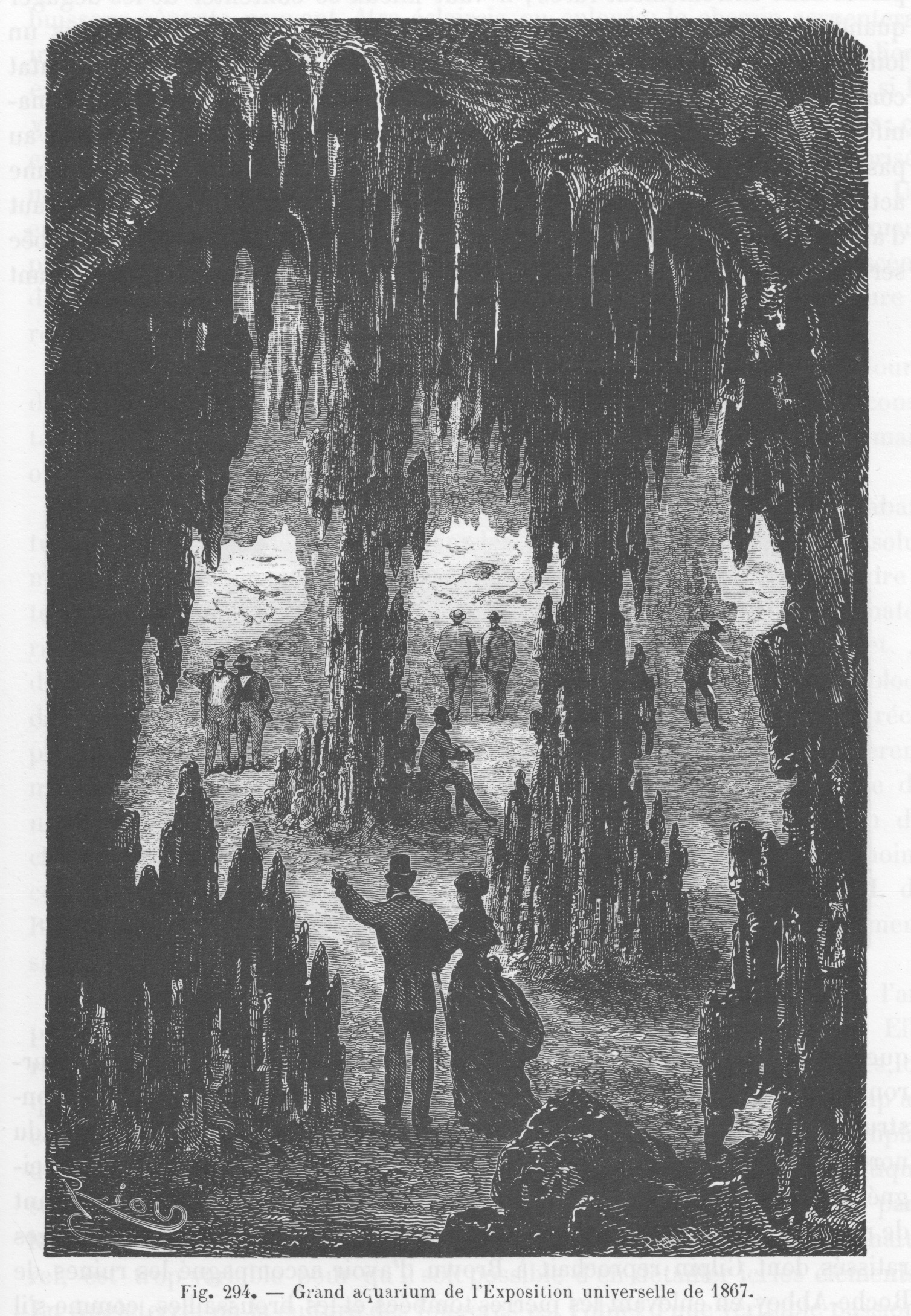
Image 2 –
Aquarium au Poisson d’eau Douce, Weltausstellung 1867, Paris. Section and Floorplan. Albums du Parc, Band I
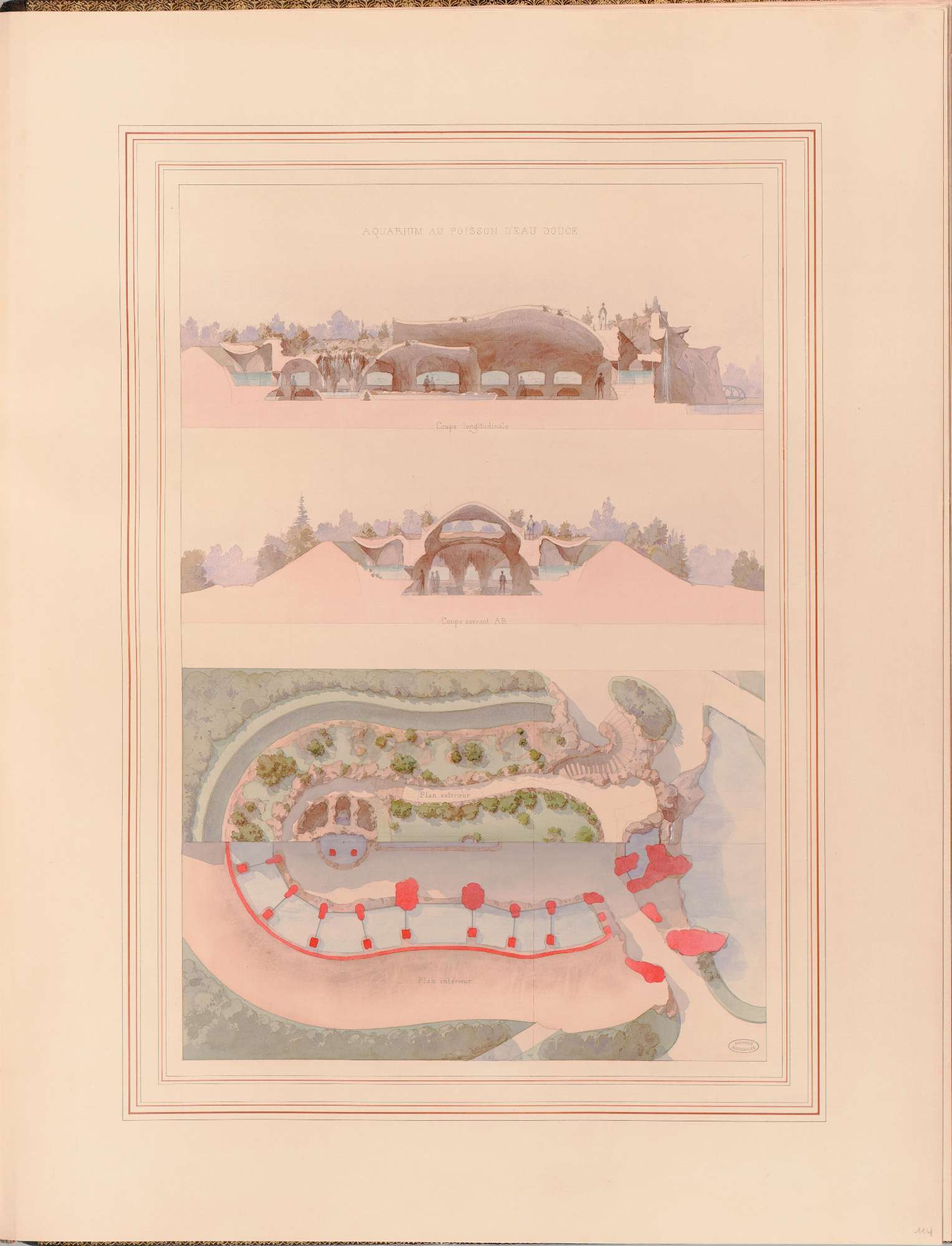
Image 3 –
The plans illustrate how the whole aquarium was built as a constructed underground space to evoke the visitor’s feeling of being underwater, within the oceans depths
Aquarium au Poisson de mer, Weltausstellung 1867, Paris. Schnitt. Albums du Parc, Band I
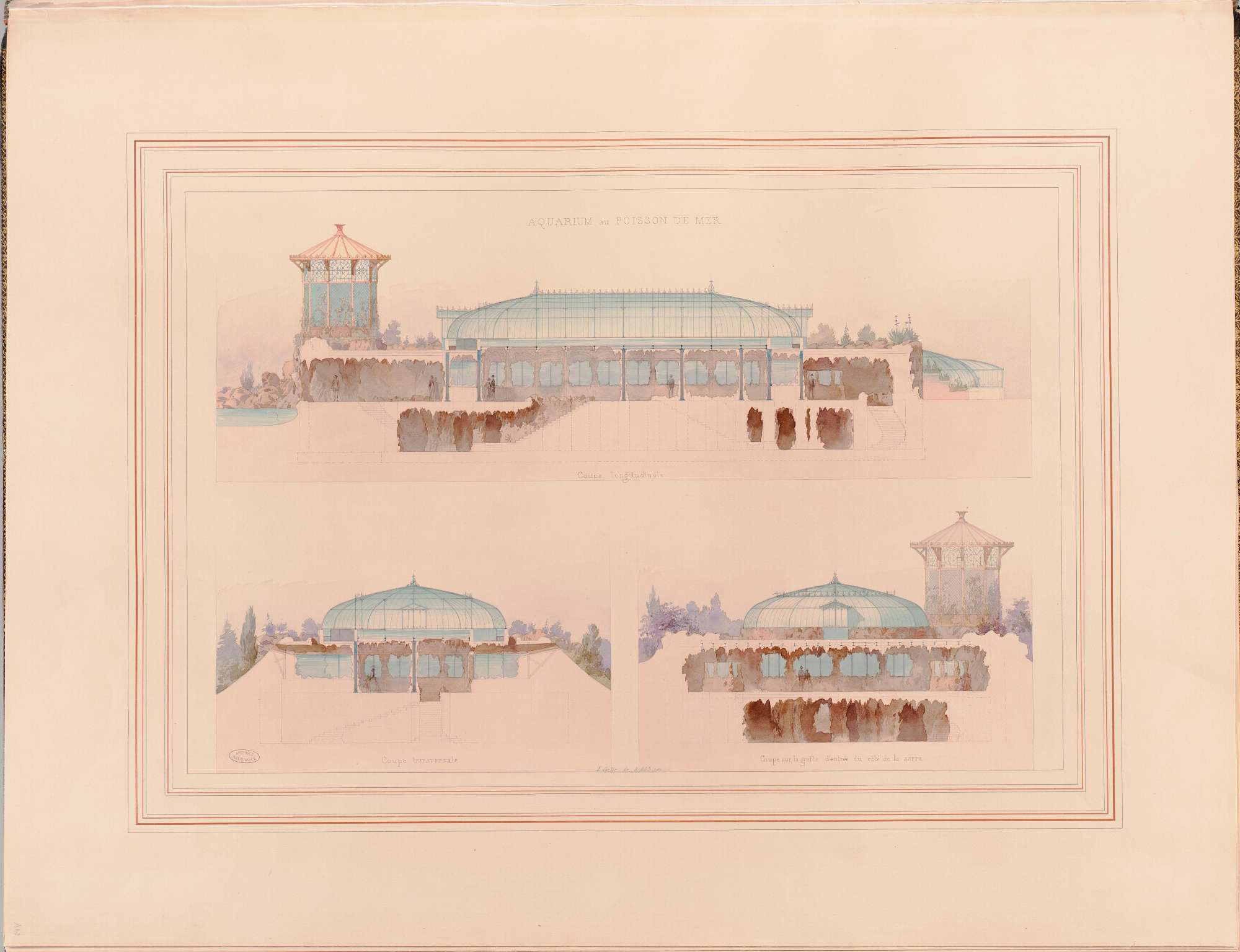
Image 4 –
Illustration of the saltwater aquarium’s interior
L’aquarium d’eau de mer, L’exposition Universelle illustrée de 1867
